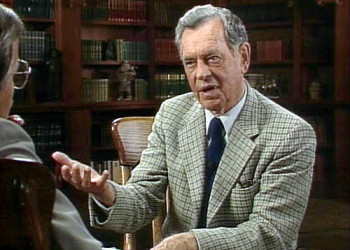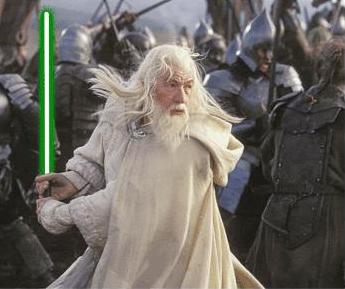Campbell’s Reheated Mythopoetic Soup
In the fall session of my teen writing class at our local library, I’m planning to teach Joseph Campbell’s The Hero’s Journey. I’ve avoided this for several sessions, because personally I’m sick of its influence. It’s been the default setting for epic fantasy, certainly since 1977. But if nothing else, it’s a structure that presents easy examples and will hopefully prompt some good discussion on why it’s popular and what writers can do with it.
But it’s also got me thinking about how it applies to my own stories, particularly those in the heroic fantasy genre. Because although it might sound counter-intuitive, the Hero’s Journey is really the antithesis of heroic fantasy.

If we take some classic, well-known examples of the hero’s journey in popular culture — King Arthur, The Lord of the Rings, The Matrix, Harry Potter and Star Wars — we discover something really interesting. The hero, in all cases, starts out as a naive young man who at first resists the call to adventure, only to finally accept under the guidance of a mentor-figure, an older man, usually a warrior or former warrior, who teaches the youngster the ways of both battle and maturity.
In heroic fantasy, by contrast, the hero (and I’m using this as a gender-neutral term) is not young and naive. S/he has the accepted skills to be a warrior (or thief, or whatever particular talent s/he needs in the story) and does not require constant guidance. Unlike the Hero’s Journey, the heroic fantasy protagonist is not acted upon, but acts — from the beginning, without the constant prodding of the Campbellian cycle.

In fact, the mentor of the Hero’s Journey — that figure embodied by Gandalf, Merlin, Obi-Wan/Qui-Gon/Yoda, Dumbledore, Morpheus — who often has to die or be otherwise incapacitated in order for the hero to mature — is really the hero of heroic fantasy. These experienced warriors exist in heroic fantasy for their own ends, whereas in the Hero’s Journey, they are mere stages on the… well, hero’s journey.
And they embrace their roles. They don’t have to be seduced or forced or bought or cajoled into being the heroes of their own stories, unlike the Arthurs, Frodos, Bilbos, and Luke Skywalkers out there. They do what they do because they’re good at it, they enjoy it, and it’s all they know.
As both a reader and a writer, I find those characters infinitely richer. It’s why my Eddie LaCrosse character is older, more experienced, and infinitely harder to impress than the heroes of more traditional, Campbell-influenced fantasy series. I’m not saying one is necessarily better than the other, just that one speaks to me, while the other has, for this reader and writer, worn out its welcome. Until, of course, someone finds an amazing new way to tell it to us again.
Ah, but what if the story of Frodo, for example, did not begin until Rivendell? Or if Neo’s tale didn’t start until after he had already known the truth of the Matrix?
Potentially bad placement for beginnings, I would think, but would such make them more like heroes in a traditional heroic fantasy venue?
Basically, without the origin stories, could one classify such characters as heroes without them having gone through the Hero’s Journey?
Not suggesting this is the case, just putting it up for possible discussion.
Always the argumentative one Ty, eh? 😉
Interesting POV Alex, I think I like it.
So where do old heroes go? Why, to regurgitate Campbell’s Hero’s Journey of course!
Am I the only one who spent a couple of seconds trying to figure out why there was a picture of Don Knotts in a plaid sportcoat?
Nip it! Nip it in the bud!
Interesting (and awesome) post Alex! I agree with you that I much prefer the heroes of heroic fantasy to the average epic/ hero’s journey hero. But I’m also interested in seeing how non hero’s journey heroes get their start. Do they start out as hero’s journey heroes or do they have a different start?
Protagonists arrive on the page in all states of readiness. Some fit Campbell’s theories like a glove, and some don’t. One of the complaints leveled against fantasy heroes by those who prefer other genres/styles is the lack of character development. Those protagonists (heroes) who begin as unwilling or lacking in skills and maturity are often the ones who evince both the greatest development, and the most cross-over appeal. I’m willing to put up with both kinds (Conan: ready-made, and Paksennarion, who takes half a lifetime to find her feet). In no event do I find Campbell’s mythic synthesis and and multicultural sweep to be anything but fascinating. Just my two cents! : )
I think to look just at the structural elements of the Hero’s Journey does it a disservice. Campbell’s whole point is that this particular narrative structure strikes a cord in the collective unconsciousness of all cultures. His point was about developmental psychology as much as anything else. It wasn’t until Lucas that it got turned into a checklist for writing modern fantasy. Still, I think it will continue to be used because the structure is extremely compelling on both a conscious and subconscious level.
Heroic fantasy, by contrast, uses a different set of structures to appeal to multiple layers of our psyches. Most of those have to do with our wishing that complex moral problems could be solved by hitting them repeatedly with sticks, or that justice would be served by stealing what the wicked stole.
Greg Hatcher noted about this:
http://monsterkidclassichorrorforum.yuku.com/topic/51697/Greg-Hatcher-on-the-focus-on-origin-tales?page=1#.UlbTvm0o5jo
Greg Hatcher
July 7, 2013 at 11:14 am
Again, the real culprits here are Joseph Campbell’s Monomyth and George Lucas’s Star Wars. Campbell arguably boiled down all the great heroic myths to a certain structure and certain mandatory elements. Lucas popularized the idea of deliberately using the Monomyth as a screenwriting manual, to specifically construct a myth with the Monomyth concepts as a guide.
What’s funny about this is that all the Campbell hoorah was mostly Lucas putting a fig leaf over how much of STAR WARS was lifted straight from comics and old SF serials, trying to persuade interviewers that it was really okay for so many people to like his movie. The original from 1977 owes a hell of a lot more to Jack Kirby than to Campbell; Darth Vader is pretty much a spacegoing Dr. Doom with the serial numbers filed off, and there’s a lot of New Gods in there too. It’s a shame it stuck. T’s right; Campbell’s book isn’t a manual. I can imagine a lot of studio guys barking things like, “Who the hell is this Campbell? Let’s get him on the phone and get a deal done.”
What Daran said.
I’m not a huge fan of Campbell, partly because when he’s talking about a mythology I know pretty well (e.g. classical, Arthurian, Norse) he seems to get significant things wrong. Also, I think differences are as interesting as similarities.
Re the age of the hero: there’s something to be said for a hero who’s exchanged a few punches with life. But a young hero who leaps into adventure without looking too carefully at what he’s getting into (e.g. Fafhrd in “The Snow Women”) has produced a lot of good heroic fiction, too.
I agree wholeheartedly about the reluctance bit. Heroes shouldn’t have to be coaxed. “Do, or do not,” as a hero-trainer once said. “But don’t whine about it to your recruiter.” (I made up that last part.)
I think it’s a case of horses for courses.
Short stories that revolve around the same central character generally don’t need an arc. By extension, there’s no need for the monomyth. Why is this so? I’m not sure, but generally a short story mc is defined by a couple of basic tics – Holmes has his pipe, Conan his long black hair etc. Characters in TV series – specifically comedy series – are the same. They don’t need to be overly dimensional, just fit for purpose. Crucially, they rarely change.
Longer work necessitates a clear character arc in order for the reader to invest in a story that is – basically – going to take longer to read. And the monomyth does chart out a character arc. I’m guessing that such stories had an educational value (or so the cultures that promulgated them believed) and were intended to appeal to young braves for a specific reason: they charted the arc from inexperience to experience, from youth to man, including what were deemed important life lessons along the way.
What do I mean by horses for courses? Just compare the Conan movies with the Conan short stories. Conan is tailor-made for the short story. Try to give him an arc and you end up with a totally different character.
Interesting that James should refer to that particular Fafhrd story. Is the Hero’s Journey really the prequel to the hero’s life?
I think you put your finger on it, Violette – that is exactly how I would think of it anyway.
By extension, most short stories with a serial character present him as fully-fledged.
>Just compare the Conan movies with the Conan short stories. Conan is tailor-made for the short story. Try to give him an arc and you end up with a totally different character.
Yes. One of my rants. Worked for Indiana Jones, though,
One major difference between epic and heroic is that in epic the hero wants to go home at the end, even if, like Frodo, he finds it changed.
Though an attempt to go home and the discovery that you prefer the quest sounds like a typical heroic fantasy origin story.
Returning home is a prerequisite of the monomyth, and by extension, the heroic storyline, as well. You leave your own community and learn how to handle yourself in the world which lies beyond. You return having being tested by your ordeals and having passed with flying colours. At home you are revered for your hard-won experience (which usually has some immediate benefit to the community). Thus you are respected at home and abroad. You are ‘Master of Two Worlds’.
I’ve always reckoned ‘The Matrix’ began with the monomyth – that the Wachowski brothers were trying to see just how robust the template actually was and that they built their story around it as opposed to using it as a means of structuring the story they wanted to tell. This would explain why the two subsequent films were so weak and also why the first film sticks so religously to the formula. I’m thinking particularly of the last scene, which (if I remember correctly) has Neo back in the matrix, standing outside a car with his shades on, looking pretty cool and clearly ‘Master of Two Worlds.’
I think folks are underestimating how much character development a character like Conan actually does have.
The Conan of “The God in the Bowl” is not the same as the Conan of “The Scarlet Citadel”.
Ebonsword has a good point. Young Conan from “Tower of the Elephant” is a different guy from the wiser, seasoned king in “The Scarlet Citadel.” We don’t see him change over the course of short stories, true. But we do see that Conan HAS changed over the course of his life, when the different short stories are set.